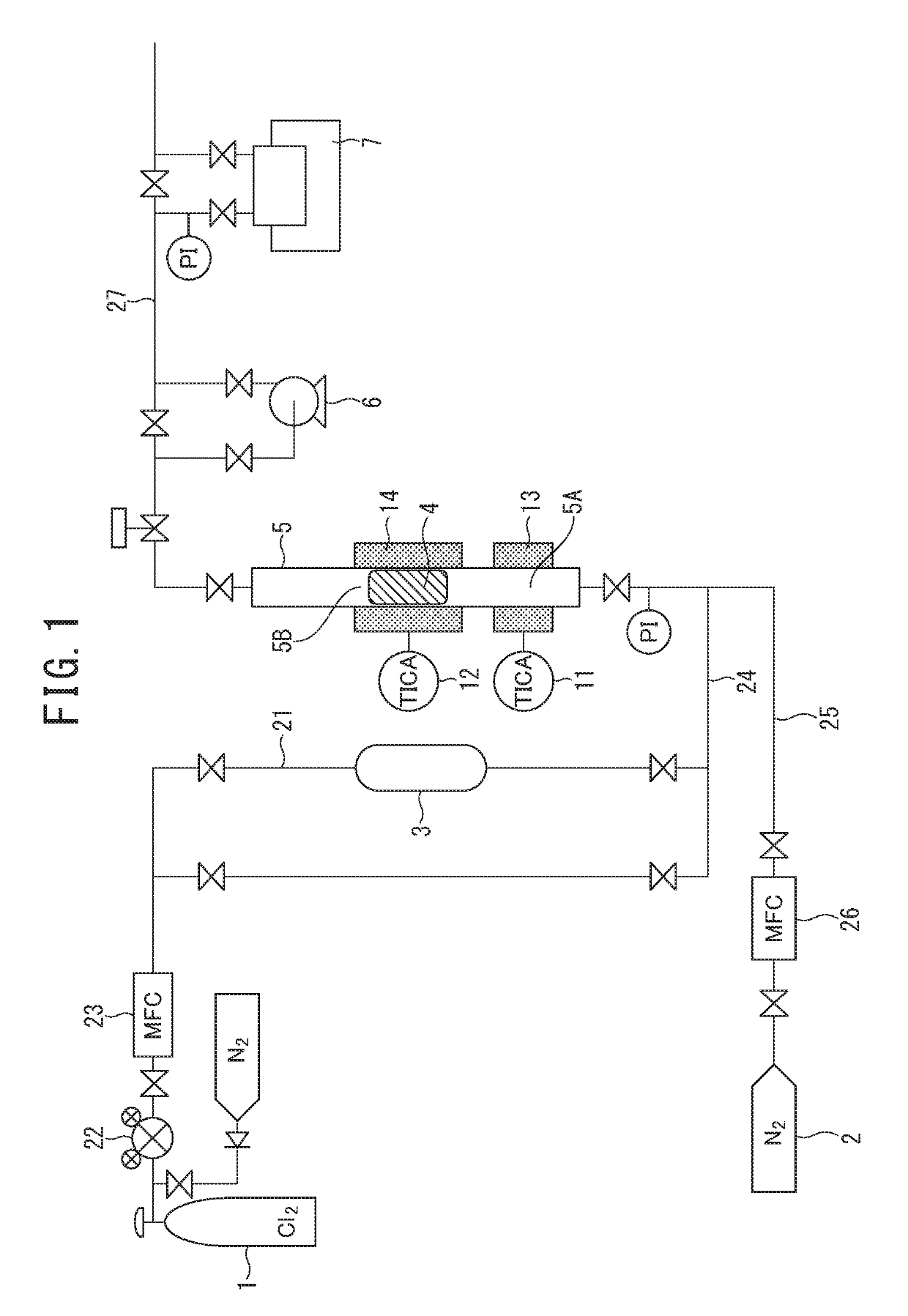Method for producing boron trichloride
- Summary
- Abstract
- Description
- Claims
- Application Information
AI Technical Summary
Benefits of technology
Problems solved by technology
Method used
Image
Examples
example 1
[0073]The same operations as in the embodiment were carried out using the same boron trichloride production apparatus as the boron trichloride production apparatus in FIG. 1 to produce boron trichloride by allowing boron carbide to react with chlorine gas. As a chlorine-containing gas, a commercially available high purity chlorine gas having a purity of 99.999% by volume and a water content of 0.9 ppm by volume was used. In a case of measuring the particle diameter with a dry sieve, as the boron carbide, a powder of which 100% by mass passed through a dry sieve having a mesh opening of 5.60 mm and 65% by mass or more did not pass through a dry sieve having a mesh opening of 1 mm was used.
[0074]20 g of the boron carbide powder was charged in a graphite tubular reaction vessel (an inner diameter is 22 mm, a height is 700 mm, and a volume of a reaction section filled with boron carbide is 19 cm3), and while allowing nitrogen gas to flow into the tubular reaction vessel at a flow rate o...
example 2
[0078]Reaction was carried out in the same manner as in Example 1 except that as the chlorine-containing gas used in the dehydration treatment of the boron carbide, instead of using a high purity chlorine gas, the following chlorine gas was used. That is, a commercially available industrial chlorine gas having a purity of 99.9% by volume and a water content of 5 ppm by volume was allowed to pass through a SUS cylinder filled with 1 L of molecular sieves 3A to reduce the water content to 1 ppm by volume or less. The obtained chlorine gas was used as the chlorine-containing gas.
[0079]As a result, the reaction was completed in 6 hours, the amount of obtained boron trichloride was 167 g, and the yield was 99% by mass. In addition, the amount of by-produced hydrogen chloride was 1 mg.
example 3
[0080]Reaction was carried out in the same manner as in Example 1 except that as the chlorine-containing gas used in the dehydration treatment of the boron carbide, instead of using a high purity chlorine gas, the following gas was used. That is, a mixed gas obtained by mixing a commercially available high purity chlorine gas and nitrogen gas in equal amounts and having a water content of 1 ppm by volume or less was used as the chlorine-containing gas.
[0081]As a result, the reaction was completed in 6 hours, the amount of obtained boron trichloride was 167 g, and the yield was 99% by mass. In addition, the amount of by-produced hydrogen chloride was 1 mg.
PUM
 Login to view more
Login to view more Abstract
Description
Claims
Application Information
 Login to view more
Login to view more - R&D Engineer
- R&D Manager
- IP Professional
- Industry Leading Data Capabilities
- Powerful AI technology
- Patent DNA Extraction
Browse by: Latest US Patents, China's latest patents, Technical Efficacy Thesaurus, Application Domain, Technology Topic.
© 2024 PatSnap. All rights reserved.Legal|Privacy policy|Modern Slavery Act Transparency Statement|Sitemap

